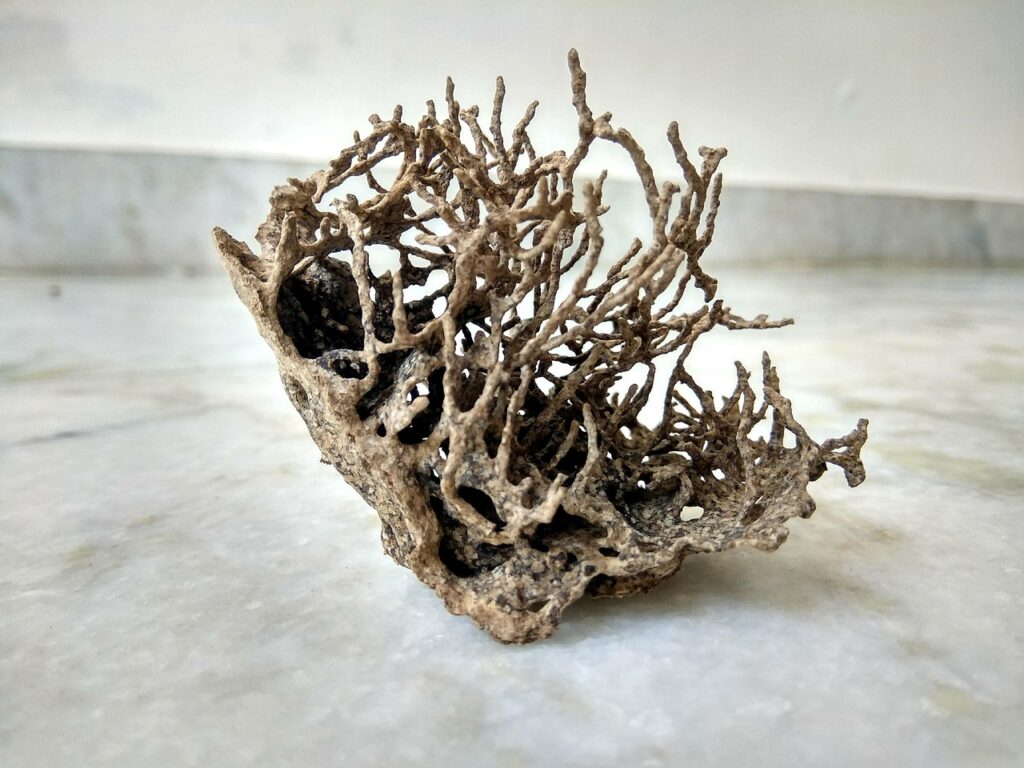Termites are known to be the most destructive beings on earth. It has been reported by industry experts that termites have been responsible for billions of dollars in damages made to homes in the past several years!
These insects are known to attack structures made of wood. The question on everyone’s minds is: can they also destroy metal structures?
Understanding the Concern
Steel buildings are widely regarded for their resistance to many natural threats. Homeowners, business owners, and developers often choose steel as a construction material because of its minimal maintenance requirements and long lifespan.
One common assumption is that steel structures are immune to pest problems, particularly termite infestations. Termites are notorious for destroying wooden structures, leaving people to wonder if a steel building is completely safe from their destructive tendencies.
It is important to understand that while steel itself does not serve as a food source for termites, no building is entirely free from the potential risks associated with these pests. Termites can still pose indirect threats to steel buildings in several ways. Exploring the relationship between steel structures and termite activity will help you better protect your property investment.
The Nature of Termites and Their Behavior
Termites are social insects that live in colonies which can number from several hundred to millions of individuals. They primarily feed on cellulose, an organic material found in wood, paper, and some types of plant-based products. Their digestion process enables them to break down tough fibers, making them particularly destructive when it comes to traditional wooden structures.
Colonies typically build extensive underground networks to locate and transport food. Subterranean termites, one of the most common species, thrive in moist environments and often remain hidden as they consume wood from the inside out. Their ability to move silently and without obvious signs of damage makes them a serious threat to any structure that includes cellulose materials.
Steel buildings may not have wooden support beams, but understanding termite behavior highlights potential vulnerabilities, especially in the case of mixed-material construction.
How Termites Can Still Threaten Steel Buildings
Although termites cannot eat or chew through steel, that does not mean a steel building is automatically termite-proof. Several components of a typical steel building can make it susceptible to termite activity.
Steel structures often include elements made of wood or other cellulose-based materials. Interior walls, baseboards, insulation backings, plywood subfloors, or roofing materials can contain wood products. Termites attracted to these areas can cause significant damage if left unchecked.
Additionally, steel buildings rely on foundations that may be surrounded by soil. Moisture-rich soil near the building creates an ideal environment for subterranean termites. Cracks in concrete slabs, gaps around pipes, and other entry points can allow termites to infiltrate and attack vulnerable materials inside.
Once termites establish a colony near or inside the structure, their presence can go unnoticed until costly repairs are needed. Understanding these points of entry is critical for prevention and early detection.
The Role of Wooden Elements in Steel Buildings
Many steel structures incorporate wooden features for both functional and aesthetic purposes. Framing inside partition walls, window and door frames, cabinetry, and decorative elements are often constructed with wood. These wooden components provide the cellulose termites crave.
In climates where humidity levels are high or where the ground remains moist, wooden elements can become even more attractive to termite colonies. Even if a steel building has only a few wooden parts, these areas can serve as the initial point of infestation. Over time, termites can compromise the structural integrity of non-steel elements and lead to expensive damage.
Builders and owners should be mindful when selecting materials for any construction or remodeling project associated with a steel building. Reducing the use of wood and opting for termite-resistant alternatives can lower the overall risk.
Termites and Concrete Foundations
Steel buildings usually rest on concrete slab foundations, which are often believed to be impenetrable to termites. Although concrete is highly durable, it can develop hairline cracks over time. Termites are remarkably adept at exploiting even the smallest fissures to reach food sources.
Foundations that include wood framing, expansion joints, or cracks are at greater risk. Moisture buildup around the foundation perimeter exacerbates the problem, creating an inviting environment for termites to thrive.
A properly designed and maintained foundation is essential for reducing the risk of termite infiltration. Waterproofing measures, proper drainage systems, and regular inspections help maintain the integrity of the foundation and deter pest activity.
Environmental Factors That Increase Termite Risk
Geography plays a significant role in the likelihood of termite problems. Areas with warm, humid climates are particularly susceptible to termite activity. States like Florida, Louisiana, Texas, and other southern regions report some of the highest termite incidences in the United States.
Even if you live in a region with a temperate or dry climate, your steel building is not entirely safe from the risk. Termites have proven highly adaptable and can establish colonies in a wide range of environments.
Moisture is another critical factor. Poor drainage around the steel building, leaking pipes, or improper ventilation can lead to increased humidity levels that attract termites. Routine checks for moisture buildup and prompt repairs of leaks can greatly reduce vulnerability.
Landscaping also contributes to termite risk. Mulch, firewood piles, wooden planters, and trees located close to the steel building provide termites with abundant food sources and pathways to enter the structure.
Warning Signs of Termite Activity
Detecting termites early is crucial to preventing extensive damage. Knowing the common signs of infestation can help you act quickly.
Mud tubes on foundation walls or interior surfaces indicate subterranean termite activity. These pencil-sized tubes are constructed from soil and termite saliva and serve as protected pathways between the colony and food sources.
Discarded wings near doors, windows, or vents often signify a swarm. Swarming occurs when a colony reaches maturity and produces winged reproductives that seek new nesting sites.
Hollow-sounding wood, blistered paint, and sagging floors can all be signs of internal termite damage. Even though these symptoms may be less obvious in steel buildings, wooden interior features can show such signs if termites are present.
Regular inspections, particularly in vulnerable areas, are essential for early detection.
Preventative Measures for Steel Buildings
Proactive strategies are vital to keep termites at bay. Even if your steel building seems invulnerable, a layered approach to pest prevention ensures maximum protection.
The first line of defense involves eliminating direct wood-to-soil contact. Any wooden parts should be properly treated with termite-resistant chemicals or replaced with non-cellulose materials like metal, concrete, or treated composites.
Drainage improvements around the building are crucial. Installing gutters, downspouts, and grading the soil away from the foundation minimizes moisture accumulation, which deters termites from settling nearby.
Applying termiticide barriers around the perimeter of the foundation acts as an effective chemical defense. Some termiticides provide protection for several years with a single application.
Sealing all cracks, gaps, and openings in the foundation and walls prevents termite entry. Routine maintenance and prompt repairs are necessary to keep these barriers intact.
For added peace of mind, many property owners invest in professional termite monitoring services, which use bait stations or regular inspections to detect early signs of infestation.
Treatment Options for Termite Infestations
If termites are discovered in or around a steel building, swift action is needed to mitigate the damage. Various treatment options are available depending on the extent of the infestation.
Liquid termiticides can be applied around the perimeter and targeted areas within the building. These chemicals create a treated zone that termites cannot cross without being affected.
Bait systems offer another effective solution. Stations placed around the building lure termites, which then carry the bait back to the colony, ultimately eliminating it.
Foam treatments can penetrate hard-to-reach areas inside walls or around utility openings where termites may be hiding.
Severe infestations may require fumigation or more extensive structural repairs. Consulting a licensed pest control professional ensures that the most appropriate and effective treatment is used.
Building Design Tips to Reduce Termite Risk
When planning a new steel building or renovating an existing one, design considerations can play a significant role in minimizing termite threats.
Choosing termite-resistant construction materials for interior features, such as fiber cement panels or metal framing, reduces the reliance on wood.
Elevating wooden components above ground level ensures they are less accessible to termites. Incorporating physical barriers like stainless steel mesh or sand barriers around foundations can physically block termite entry.
Maintaining an open, well-ventilated crawl space beneath the building discourages moisture buildup and makes it easier to perform routine inspections.
Including easy access points for inspection around utility penetrations, foundation edges, and other critical areas simplifies maintenance and early detection efforts.
Thoughtful design reduces long-term risks and contributes to the overall longevity of the structure.
Financial Considerations of Termite Prevention
Investing in termite prevention for a steel building may seem unnecessary to some owners who believe steel alone offers sufficient protection. However, the financial consequences of termite damage extend beyond repair costs.
Insurance policies often exclude termite damage, meaning property owners are responsible for the full cost of repairs. Expenses can quickly escalate, especially if termites compromise foundational elements or utility systems.
Prevention is far more cost-effective than remediation. Routine inspections, barrier treatments, and moisture management are relatively inexpensive when compared to the potential losses associated with termite infestations.
Moreover, maintaining a pest-free structure helps preserve the resale value of your property and ensures that inspections during potential sales transactions go smoothly.
Conclusion
Steel buildings offer tremendous benefits in terms of strength. However, assuming that they are entirely immune to termite threats can lead to costly mistakes. Although termites cannot chew through steel, they can damage associated wooden elements, foundations, and other vulnerable areas.
Understanding the ways termites can infiltrate and harm a steel building is the first step toward comprehensive protection. Through thoughtful design, material selection, diligent maintenance, and preventative treatments, you can minimize the risk of termite problems and safeguard your investment.
Staying vigilant, conducting regular inspections, and taking proactive steps ensures that your steel building remains durable, safe, and valuable for decades to come.

